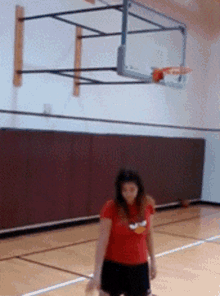AI-Generated Content
This article has been created using advanced AI technology to provide you with informative and engaging content.
AI-Curated Resources:
When discomfort settles into your body, particularly in places like your back, it can really throw off your whole day, or even your week, or your life. People often look for ways to find some ease, and sometimes, a direct approach is needed to calm things down right where the trouble is brewing. These targeted treatments, sometimes called "back shots" when they're given in that area, are one way medical professionals try to bring some relief to spots that are feeling sore, swollen, or just plain irritated. They're designed to act locally, helping to quiet the signals of pain right at the source, which can be a real blessing when you're dealing with persistent aches.
You know, when a joint feels like it's screaming at you, whether it's your ankle, an elbow, your hip, or that often-troublesome knee, a precise injection can sometimes make a world of difference. It's a way, you see, of delivering a specific kind of calming medicine directly to the area that's causing you grief. This method aims to reduce the swelling and the general irritation that often comes with those sorts of aches, helping you feel a bit more comfortable, which is really what most people are hoping for when they consider these options. It’s almost like giving a very direct message to the irritated part of your body to just relax for a little while.
For those experiencing a nagging ache in their lower back, or perhaps a persistent stiffness that just won't let up, these kinds of localized treatments are often considered. It's pretty common, as a matter of fact, for low back discomfort to be one of the most frequent reasons people seek out these targeted approaches. The idea is to provide a focused sort of help, trying to lessen the pain and the irritation right where it lives, so you can get back to doing the things you need to do, or really, just feel more like yourself again. They are, in a way, a direct line to feeling a bit better.
- Diddy Allegations Wikipedia
- P Diddy And Illuminati
- Alya Vural If%C5%9Fa
- Liam Payne Mother
- Sean Combs Penis
Table of Contents
- What Are These "Back Shots" We Hear About?
- Is Surgery Always the Answer for Back Pain?
- Are There Different Kinds of "Back Shots" for Pain?
- What About Potential Side Effects from "Back Shots"?
- Other Medical Procedures and "Back Shots"
What Are These "Back Shots" We Hear About?
When someone talks about "back shots," they're often referring to a specific kind of injection that goes into or around the spine or other areas causing back discomfort. These injections are really meant to help calm down pain, reduce swelling, and soothe irritation in a particular spot. Think of it like a very targeted way to bring relief right to where the problem is. For instance, cortisone shots are a common type that people get. They're typically put into joints that are aching, like an ankle that's been giving you trouble, an elbow that feels stiff, a hip that's protesting with every step, or a knee that just doesn't want to bend right. These injections aim to quiet down the local inflammation, helping you feel a bit more at ease, which is usually the goal, you know, when you're in pain.
Easing Discomfort with Cortisone "Back Shots"
Cortisone shots, as we were just talking about, are a pretty common way to tackle localized pain and swelling. They work by delivering a type of medicine that helps to reduce inflammation right where it's needed most. Imagine a joint that's feeling hot and angry; this shot is basically a direct message to that area to cool down and relax. It's often used for things like an inflamed ankle that makes walking a chore, or a shoulder that's stiff and sore, or perhaps even a knee that's swollen and difficult to move. The idea is to provide relief that can last for a while, giving your body a chance to recover without constant irritation. However, it's worth noting, you can only get a few of these particular "back shots" or joint injections in a year. This is because, over time, the medicine, if used too often, could actually weaken the tissues nearby, and that's something medical professionals really want to avoid, naturally.
So, while these cortisone "back shots" can be a real comfort when you're hurting, there's a limit to how often you can have them. This is because, as mentioned, they can potentially affect the strength of the tissues around the injection site. The medical folks who administer these are quite careful about this, ensuring that the benefits of pain relief are weighed against any potential long-term effects. They really do help with that immediate pain and swelling, which is a big deal when you're trying to get through your day, but it's not a treatment you can just keep getting endlessly, which makes sense, really, when you consider how the body works.
When Numbness Helps - Lidocaine and Other "Back Shots"
Sometimes, the goal isn't just to reduce inflammation but to completely quiet the pain signals for a period, perhaps for a procedure or just to give a very sore area a break. This is where something like a lidocaine injection comes in. Its purpose is to cause numbness or a loss of feeling in a specific spot. Think of it as hitting the mute button on your body's pain alarm system. This is often done for people who are having certain medical procedures, especially by blocking particular nerves, like those in the brachial area, which can be quite sensitive. It basically makes the area go to sleep so you don't feel anything during the process, which is, you know, pretty important for comfort.
Now, when it comes to "back shots" for things like spinal stenosis, which is a narrowing of the spaces in your spine that can put pressure on nerves, steroid shots are sometimes considered. However, it's interesting to note that these steroid shots may not always be the very best choice for this particular condition. Some studies have actually suggested that a combination of steroids and a numbing medicine, similar to lidocaine, can provide more effective relief for back discomfort. So, it's not always about one type of medicine alone; sometimes, a mix of approaches works better to truly ease the pain and help someone feel more comfortable. This is a subtle but important distinction, actually, in how these "back shots" are used.
Is Surgery Always the Answer for Back Pain?
When you're dealing with back pain, especially if it's been around for a while, thoughts of surgery might cross your mind. It's true that back surgery can certainly help ease some of the things that cause back pain, but it's really not something that's needed all that often. In fact, for most people, back pain tends to get better on its own within about three months. This is a pretty common pattern, so medical professionals usually suggest trying other things first before considering something as significant as an operation. It's almost like giving your body a fair chance to sort itself out, with a little help, of course, from less invasive methods.
Low back pain, in particular, is one of the most common complaints people have, and it usually responds well to simpler approaches like physical therapy, certain exercises, or even those targeted "back shots" we've been discussing. The idea is to avoid cutting into the body unless it's truly the last resort and other options haven't provided enough relief. So, while surgery is an option, it's typically seen as a final step, not the first one, when it comes to managing persistent back discomfort. It's a pretty big decision, after all, and doctors generally want to make sure it's the right one for you.
Thinking About "Back Shots" Versus Surgery
When you're facing persistent back discomfort, the choice between something like "back shots" and a more involved procedure like surgery can feel pretty big. As we've touched upon, most back pain tends to improve on its own within a few months, and surgery is rarely the first thing recommended. Often, people try less invasive options first, like various forms of physical therapy, specific exercises, or perhaps even just modifying their daily activities. "Back shots," in this context, offer a middle ground. They are more direct than pills or creams but much less invasive than an operation. They aim to provide relief right where it's needed, helping to calm down irritation or numb a painful area, potentially allowing you to participate more effectively in physical therapy or just manage your daily life with less discomfort. So, they're typically part of a broader strategy to help you feel better without immediately going under the knife, which is, you know, often preferred.
Are There Different Kinds of "Back Shots" for Pain?
Yes, there are quite a few different kinds of "back shots" and other targeted treatments that aim to help with pain, not just in the back but also in other areas like the neck, knees, shoulders, or hips. It's not a one-size-fits-all situation, as different types of pain and different underlying issues might call for a different kind of approach. Some injections focus on reducing inflammation, as we discussed with cortisone. Others might aim to numb specific nerves, while still others might introduce substances meant to help lubricate joints. The goal, however, is pretty much the same across the board: to help ease the discomfort and make life a bit more manageable. You know, finding the right tool for the job is key here.
Exploring Specific "Back Shots" - Radiofrequency Neurotomy
One interesting type of targeted treatment that can help quiet nerves that are causing pain is called radiofrequency neurotomy. This isn't exactly a "shot" in the sense of injecting medicine, but it's a very precise procedure that uses heat generated by radio waves to temporarily turn down or even stop those pain signals coming from a specific nerve. It's often considered for persistent discomfort in the neck or back, where a particular nerve seems to be the main culprit. It's a very targeted treatment, meaning the medical team focuses directly on the nerve that's causing the trouble, rather than affecting a wide area. This can be a real relief for people who have tried other things without much success, offering a different way to manage those stubborn aches, which is, you know, pretty clever.
Considering Hyaluronic Acid "Back Shots" for Knees
While we're talking about "back shots," it's worth mentioning that similar injection therapies exist for other joints, even if they're not directly in the back. For example, hyaluronic acid injections are used to help with knee pain that comes from osteoarthritis. This is often tried for people who have already given pain relievers, like over-the-counter options, a good go without enough relief. Hyaluronic acid is a substance that's naturally found in the fluid around your joints, and it acts like a lubricant and a shock absorber. So, when it's injected into a knee that's feeling stiff and painful because of osteoarthritis, the idea is to help restore some of that natural cushioning and smoothness, making movement a little less uncomfortable. It's a way, you see, to try and improve the joint's natural function, which is pretty neat.
What About Potential Side Effects from "Back Shots"?
Any medical treatment, including "back shots" or other injections, can come with some potential side effects, and it's always good to be aware of what might happen. For instance, if you're using a corticosteroid, whether it's in pill form like Prednisone, a cream, or an injection, there are certain things you might experience. These can range from relatively minor reactions to some more noticeable changes in your body. It's important to talk with your healthcare provider about what to expect so you're not caught off guard. They can help you understand the likelihood of these effects and what to do if they occur, which is, you know, always a good idea.
Understanding the Body's Reaction to "Back Shots"
When we talk about the body's reaction to "back shots" or other medical interventions, it's a pretty varied picture. For example, some general side effects that can come up with various treatments might include things like acne, or even some discomfort in the back itself, which can be a bit ironic if you're getting a shot for back pain. Other things that might pop up are bloody or black, tarry stools, bone pain, tenderness, or aching, chest pain, discomfort, or a feeling of tightness. You might also experience chills, a cough, or even changes in your skin color, either darkening or lightening. Sometimes, people report feeling a sense of discouragement, which can be a tough thing to deal with on top of physical symptoms. These are all things that a medical professional would want to know about, obviously, so they can help you manage them.
More common reactions to injections or certain back pain treatments can include blistering, crusting, irritation, itching, or reddening of the skin right where the shot was given or in other areas. You might also notice bloody or cloudy urine, or perhaps cracked, dry, or scaly skin. Difficult, burning, or painful urination can also be a symptom that arises. These sorts of reactions, while not always pleasant, are things that your medical team can help you understand and address. It's just part of the body's way of reacting to something new, you know, that's been introduced.
Other Medical Procedures and "Back Shots"
Beyond the typical "back shots" for pain, there are other medical procedures that involve injections or are related to back health, even if they seem a little different at first glance. Sometimes, these treatments are part of a longer process, taking perhaps three to five years to complete, depending on the condition being addressed. This indicates that some health issues require a sustained, long-term approach, not just a quick fix. It's a reminder that managing certain health conditions is a marathon, not a sprint, which is, you know, an important perspective to have.
Unexpected "Back Shots" and Other Treatments
It's interesting how different medical situations can involve injections, sometimes even in unexpected ways. For instance, if you haven't had the rabies vaccine and there's a concern about exposure, you'll receive a specific injection. This isn't a "back shot" for pain, of course, but it's a critical preventative measure. In this scenario, you'd typically lie face down, and then you'd get numbing shots in your skin before the main treatment. This just goes to show how injections are used for a whole range of medical reasons, not just for pain relief, but for preventing serious illnesses too, which is, you know, pretty vital.
Then there's a procedure called vertebroplasty, which is specifically for certain spinal issues. This usually takes about an hour to complete. However, if more than one spinal bone needs treatment, it might take a bit longer. This isn't a "back shot" in the sense of a pain-relieving injection, but it's a procedure that directly addresses the spinal bones, which are, you know, a very important part of your back's structure. It's a more involved treatment than a simple injection but still aims to help with the integrity and comfort of the back. And finally, on a different note, iron dextran is an iron replacement product. It's used to help people who have an iron deficiency, like anemia, where there isn't enough iron in the blood, or for those who have experienced blood loss. While not a "back shot" for pain, it's another example of how injections play a role in maintaining overall health, which is, you know, quite a broad application for this type of medical delivery.
AI-Enhanced Visual Content


